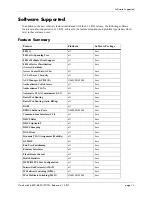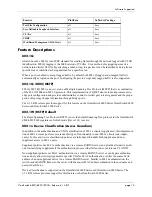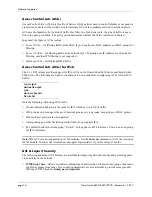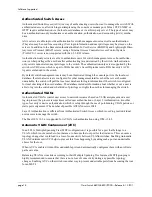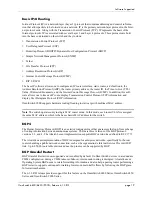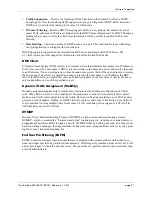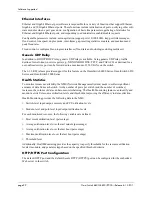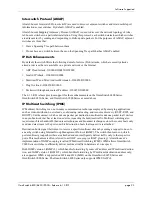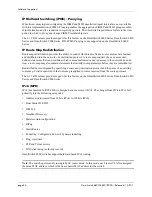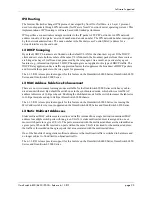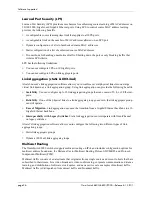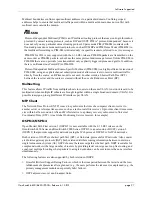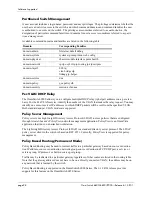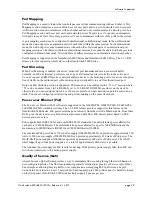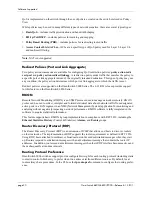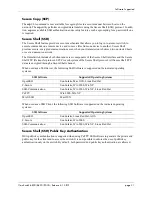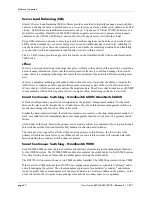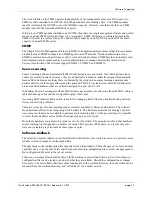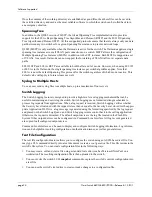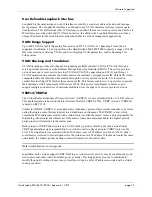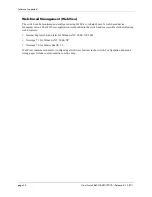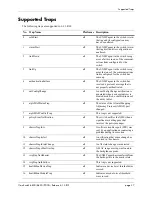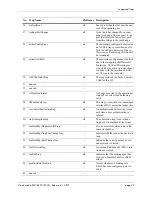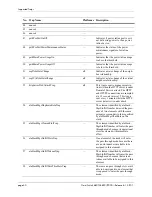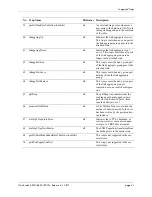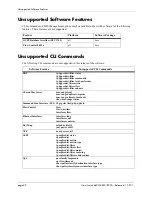
Software Supported
OmniSwitch 6800/6850/9000—Release 6.1.3.R01
page 27
Multicast boundaries confine scoped multicast addresses to a particular domain. Confining scoped
addresses helps to ensure that multicast traffic passed within a multicast domain does not conflict with
multicast users outside the domain.
PIM
PIM-SSM
Protocol-Independent Multicast (PIM) is an IP multicast routing protocol that uses routing information
provided by unicast routing protocols, such as RIP and OSPF. PIM is “protocol-independent” because it
does not rely on any particular unicast routing protocol. Sparse mode PIM (PIM-SM) contrasts with
flood-and-prune dense mode multicast protocols, such as DVMRP and PIM Dense Mode (PIM-DM) in
that multicast forwarding in PIM-SM is initiated only via specific requests, referred to as
Join messages
.
PIM-DM for IPv4 is now supported with the 6.1.3.R01 release. PIM-DM packets are transmitted on the
same socket as PIM-SM packets, as both use the same protocol and message format. Unlike PIM-SM, in
PIM-DM there are no periodic joins transmitted; only explicitly triggered prunes and grafts. In addition,
there is no Rendezvous Point (RP) in PIM-DM.
Protocol Independent Multicast Source-Specific Multicast (PIM-SSM) is a highly-efficient extension of
PIM. SSM, using an explicit channel subscription model, allows receivers to receive multicast traffic
directly from the source; an RP tree model is not used. In other words, a Shortest Path Tree (SPT)
between the receiver and the source is created without the use of a Rendezvous Point (RP).
Multinetting
This feature allows IP traffic from multiple subnets to coexist on the same VLAN. A network is said to be
multinetted when multiple IP subnets are brought together within a single broadcast domain (VLAN). It is
possible to assign up to eight different IP interfaces per VLAN.
NTP Client
The Network Time Protocol (NTP) is used to synchronize the time of a computer client or server to
another server or reference time source, such as a radio or satellite receiver. It provides client time accura-
cies within half a second on LANs and WANs relative to a primary server synchronized to Universal
Coordinated Time (UTC) (via a Global Positioning Service receiver, for example).
OSPFv2/OSPFv3
Open Shortest Path First version 3 (OSPFv3) is now available with the 6.1.3.R01 release on the
OmniSwitch 6850 Series and OmniSwitch 9000 Series. OSPFv3 is an extension of OSPF version 2
(OSPFv2) that provides support for networks using the IPv6 protocol. OSPFv2 is for IPv4 networks.
Both versions of OSPF are shortest path first (SPF), or link-state, protocols for IP networks. Also consid-
ered interior gateway protocols (IGP), both versions distribute routing information between routers in a
single Autonomous System (AS). OSPF chooses the least-cost path as the best path. OSPF is suitable for
complex networks with a large number of routers by providing faster convergence, loop free routing, and
equal-cost multi-path routing where packets to a single destination can be sent to more than one interface
simultaneously.
The following features are also supported by both versions of OSPF:
•
Graceful (Hitless) Support During Failover, which is the time period between the restart and the rees-
tablishment of adjacencies after a planned (e.g., the users performs the takeover) or unplanned (e.g., the
primary management module unexpectedly fails) failover.
•
OSPF adjacencies over non broadcast links.

